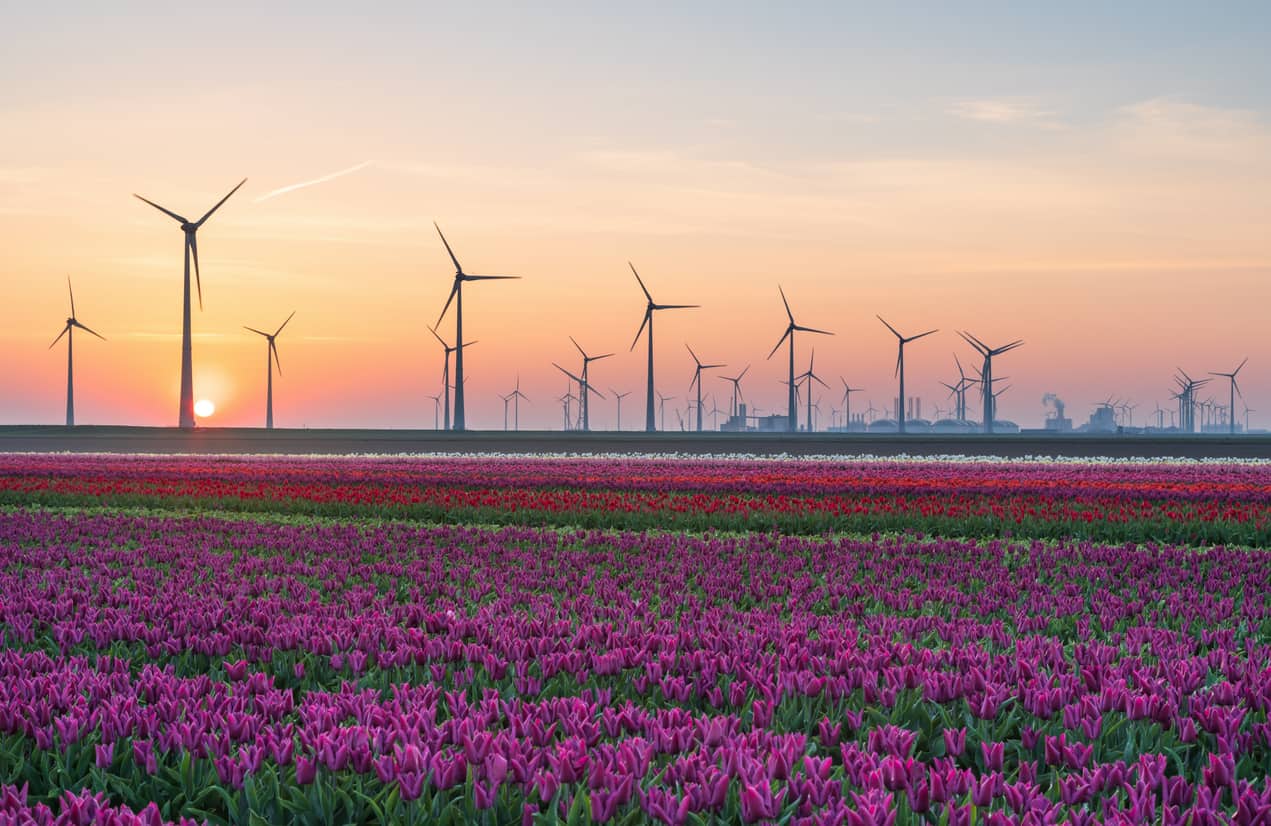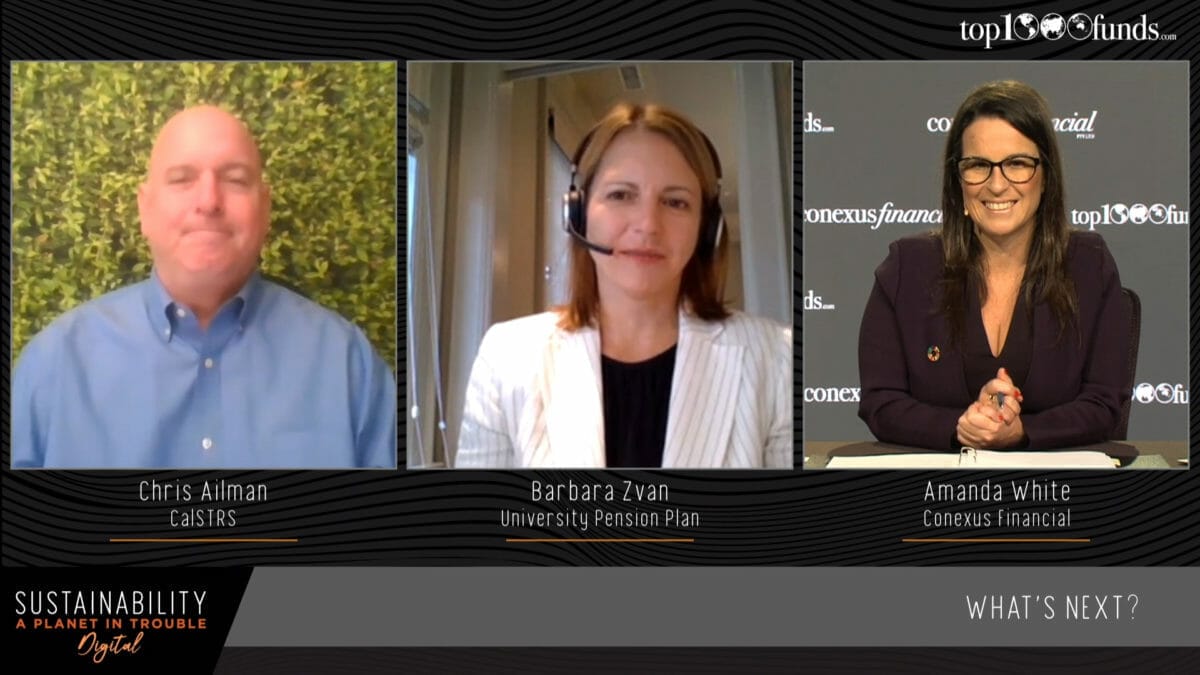The largest pension fund in Europe, the €450 billion Dutch ABP, which has long been a leader in sustainability, set out its sustainability and responsible investment plan for 2025 last month.
The plan sets out long-term objectives – in line with the goal of a climate-neutral economy by 2050 – as well as the short-term steps to achieve that.
It says that by 2050, the global economy should be climate neutral and ABP wants to bring its portfolio in line with the goals of the Paris Agreement by 2030.
The fund achieved its 2020 sustainability goals, set in the strategic plan of 2015, which saw it reduce its carbon footprint by 30 per cent compared to 2015 levels and commit €10 billion to renewables. The new plan will lift those goals to 40 per cent and €15 billion respectively in what is a continuous target.
Diane Griffioen, who is head of investments at ABP and has responsibility for investment policy, says the 2015 sustainability policy – that saw the fund set targets for CO2 reduction, investment in renewables and investment alignment with the SDGs for the first time – was a decisive moment for the organisation but that the new policy has a much stronger ambition.
“The 2015 policy was a turning point, it was ambitious and was hard work. APG did a really good job implementing that for us. At the same time, when we were setting this new policy we decided it was better to take a longer horizon. So we’re not just looking at a five year vision but further into the future – the ambition is for 2050, 2030 and the shorter term goals for the next five years. That was a real difference,” she says.
The fund first set clear policy, principles and objectives around sustainability back in 2008 but the policy in 2015 set quantitative targets for the first time.
According to Claudia Kruse, managing director global responsible investment and governance at APG, the biggest impact of those concrete targets was that it triggered a cultural shift in the organisation.
“Back in 2008 our view of investments was about risk, return and cost with an underpinning of ESG. Since 2015 that has become a quadrant. Every portfolio manager has to carefully consider every investment decision in that quadrant,” Kruse says.
For example now, under the fund’s inclusion policy, portfolio managers can only invest in companies identified as ESG laggards if they engage for change.
“So engagement becomes a pre-consideration for investment, this guides the organisation and changes the way we invest. It’s the principle of making conscious choices, and alters the way we make investments.”
The portfolio managers also now have insight on a daily basis of the portfolio’s carbon footprint with much work having been done in the IT and operating systems to embed ESG data into the core system.
Implementation
ABP is the pension fund for employees in the government and education sectors and has more than 2.9 million members. It now has 40 staff of its own who are tasked primarily with strategy and policy. The execution of the portfolio is done by APG which is the fund’s sole pension investment provider.
The development of the sustainability plan was done in collaboration between ABP and APG but also external stakeholders including NGOs, financial institutions, employers and unions.
“We are proud we have this sustainability policy, but also confident of its execution. It’s an ambitious policy but we have a strong operation, and I’m really proud of the cooperation between ABP and APG, the process has been energetic,” Griffioen says.
Kruse agrees the connection with beneficiaries and collaboration with stakeholders sets ABP apart.
“The collaboration that was seen in the development of the policy will continue as we implement the policy. You need to invest in line with what your constituency expects of you and your fiduciary duty,” Kruse says.
The new 2020 sustainability plan sets out a target of a 40 per cent reduction in the portfolio’s carbon footprint, it is currently down 30 per cent since 2015, and this is implemented by giving portfolio managers a carbon budget and the freedom to decide how to approach it in their portfolios.
“This is about active management so it’s not about a more limited universe,” Kruse says.
But Griffioen points out the goal is not just to focus on equity investments.
“We want to have a net zero economy and a net zero portfolio,” she says.
This means moving beyond just equities and next year ABP will set new targets to include other asset classes, which will most likely start with the credit portfolio.
The fund also has nearly €10 billion in renewables, with a new target of €15 billion in renewable and affordable energy, a slightly expanded definition consistent with the SDGs.
The fund’s infrastructure portfolio has been a great source of clean and renewable energy investments and other private markets will also be a target.
“We want to make sure everyone in the organisation is aware of this target and is active in it,” Kruse says. “We always have to meet the same risk return requirements, but the more you are on the look out, the more you able to select them. We have been into renewables for a long time, and many more investors are now interested. We would definitely like to see more of these investments coming to market that are structured so we can invest in them as a large institutional investor.”
Expansion
The 2025 strategic plan does more than just set targets, it takes the sustainability leader into the next decade and beyond, expanding the scope beyond climate to include resource scarcity and digitalisation.
ABP says the transition to a circular economy is essential to achieve a climate-neutral global economy by 2050 and it wants to accelerate this transition so that by 2030 efficient and socially responsible raw material supply chains are common practice in companies. It has said it will invest more in companies with circular business models and innovative solutions for food and natural resource scarcity.
The theme of natural resources was chosen as a result of member demand.
“One thing our members mentioned is scarcity of materials. It was also on our list but they specifically mentioned it. It’s a recognition that if we don’t work in a more sustainable way then we won’t have any natural resources, it’s broader than climate,” Griffioen says.
It has also connected sustainability and digitalisation, saying that by 2050 digitalisation should lead to responsible value creation and provide solutions to challenges such as climate change and the scarcity of natural resources. One of ABP’s goals is to have more invested in companies that can demonstrate a contribution to this by 2025 and it will also set criteria to assess whether companies respect the digital rights of employees, consumers, and users.
Another of ABP’s goals for 2025 is to have 20 per cent of assets invested in SDGs, this figure currently sits at around 14 per cent.
“This is a huge step, but we really wanted to make a strong statement and stimulate APG to find new SDG investments. We want our full portfolio to be sustainable and responsible, but we’ll also have 20 per cent dedicated to the SDGs which means the products those companies make are directly correlated to impact around the SDGs. We really wanted to grow in that without sacrificing risk and return,” Griffioen says.
In the next few years ABP will focus on specific investments in the SDIs and will also strengthen the assessment criteria for company inclusion in the portfolio.
“At the moment we have laggards and leaders. The criteria companies need to meet to become a leader will come under three themes – climate, digitalisation and resource scarcity –and if they don’t meet the criteria, then we can’t have them in the portfolio,” Griffioen says.
It will tighten its assessment criteria of companies so that they will align with the UN guiding principles for business and human rights. This is described by Griffioen as more of a necessity and focuses on how companies approach human rights, treat employees and the impact on society.
It’s a bold step for a fund already at the forefront, and another indicator of what sustainability leadership looks like.




